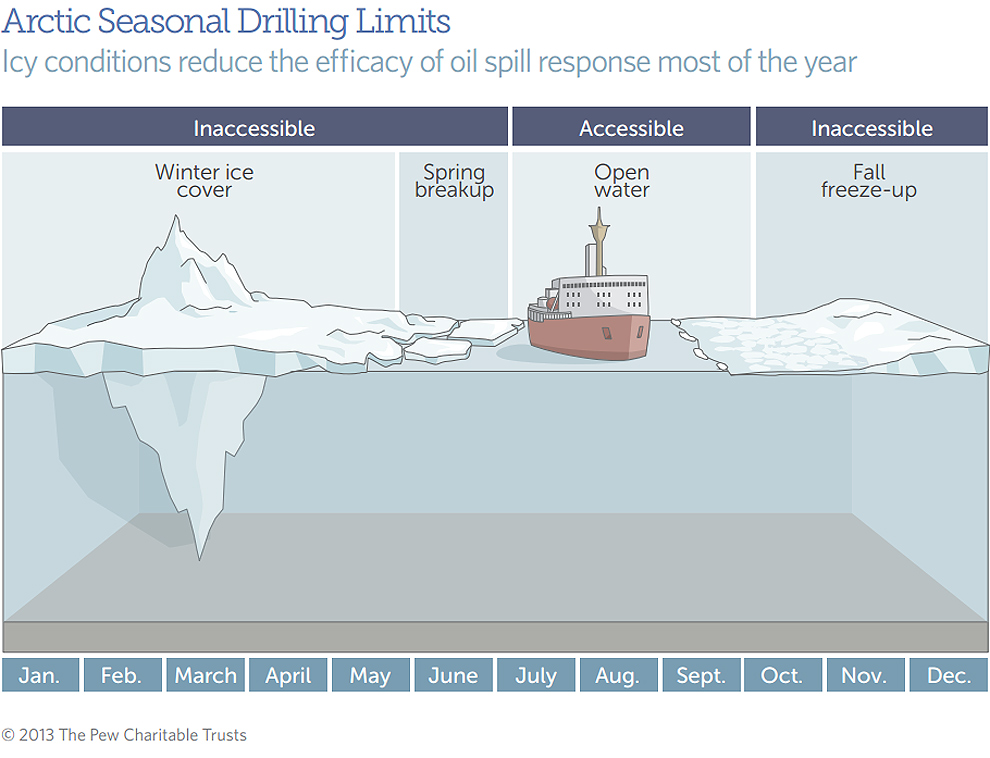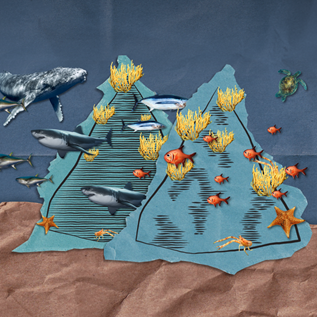Raising the Bar for Arctic Ocean Drilling
As industry prepares to drill in the Arctic Ocean this summer, it is critical to ensure that disasters such as the Deepwater Horizon oil spill in the Gulf of Mexico and the Kulluk drill rig grounding near Kodiak do not happen.
In February, the Department of the Interior released draft Arctic-specific regulations for exploration drilling in the federal waters of the ecologically rich Chukchi and Beaufort Seas. Although these regulations would not prevent every problem that could arise, they are an excellent first step to ensure that drilling operators and their contractors are Arctic-ready. Having clear and established requirements also provides regulatory certainty for all companies operating in the U.S. Arctic and places the companies on equal footing.
As Alaskans know, Arctic weather can be severe and change rapidly: High seas, punishing storms, and ice—even floes as big as apartment buildings—can still be present even in the summer. However, the drilling regulations in effect now are largely written for temperate waters such as the Gulf of Mexico’s. The newly proposed offshore regulations recognize the Arctic’s challenging conditions, and propose improvements in safety, oil spill prevention and response that set a higher bar for Arctic exploration. For instance, equipment and trained personnel must be readily available to immediately contain and stop an uncontrolled release of oil known as an offshore well blowout.
Because blowouts occur for a variety of reasons, stopping a blowout is not a one-size-fits all proposition. The Interior Department’s proposed rules rightly require operators to have a range of tools in the Arctic, including a capping stack that can fit directly on the wellhead, a containment system to capture oil above a leak, and a second rig to drill a relief well. Although capping stacks and containment systems are the speedier options, they don’t work in every scenario: Some circumstances require a relief well to stop a blowout and drilling operators must be prepared for that potential situation. Since the 1970s, 16 incidents occurred worldwide in which a relief well was the only way to permanently stop a well blowout.

Even with sea ice receding, the Arctic Ocean is still only navigable during a short season, typically late June to late October. Proposed rules contain an essential requirement that operators cease drilling with enough time to drill a relief well, if needed to stop an oil spill,before seasonal ice could interfere.
These regulations also address the critical issue of timing when operating in the Arctic Ocean, where sea ice forms after the short navigable water season (typically late June to late October) and closes off access to most ships. In November, ice and severe weather will force most emergency response equipment out of the area and make spill response and removal operations virtually impossible. The Interior Department has proposed an essential buffer for drilling safety that would ensure operators have enough time to conduct emergency operations, such as drilling a relief well, before seasonal ice interferes.
In addition, the rules would require that the drilling and spill response plans created for the operating season be adapted for expected Arctic conditions. The challenges go beyond extreme cold, freezing spray, snow, extended periods of low light, strong winds, dense fog, sea ice, strong currents, and dangerous sea conditions to include the limited infrastructure that could support an emergency response. The United States has only two icebreakers, and just one is available to the Arctic Ocean and Bering Sea; surrounding communities have limited roads, boat docks, ports, and airports. The proposed rules also call for operators to demonstrate that they can mitigate the impacts of their activities on important Arctic subsistence hunting and fishing areas.
There are a few areas where these proposed regulations can be improved. One that should concern Alaskans is that the federal government is not providing the public a way to review and comment on oil spill response plans. Before an operator’s plan for handling a significant spill is approved, the public, especially the people who would be most affected by an accident, should be afforded that opportunity.
No regulation can anticipate or prevent every conceivable accident. However, the Interior Department’s proposal incorporates lessons learned from previous incidents, addresses ways to stop a blowout, and provides communities some assurance that companies are more prepared to respond. Now, as the Interior Department works to finalize the rules, we need to ensure that these critical elements remain at the core—and that industry upholds them.
Read the full article at adn.com.











